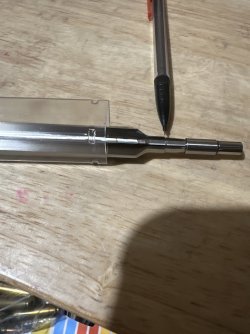for those who have clockers and other chambering issues, what is your reloading regiment? do you neck size and bump, neck only or anneal?
if full sizing wears brass out faster (supposedly), then i must be the luckiest as some brass i have has been fl more than 20x. never had any clickers or trouble chambering any ammo/cartridges i've done for AR's and BA's. what gives! i don't reload/handload for prs or any other competitions. i also will state i probably won't (so far) have any group sizes less that 1/2moa (most fall in between 1 and 1/2" moa groups). i've been reloading for 40 years and by no means an expert or so-called professional i just don't have these issues so many have.
if full sizing wears brass out faster (supposedly), then i must be the luckiest as some brass i have has been fl more than 20x. never had any clickers or trouble chambering any ammo/cartridges i've done for AR's and BA's. what gives! i don't reload/handload for prs or any other competitions. i also will state i probably won't (so far) have any group sizes less that 1/2moa (most fall in between 1 and 1/2" moa groups). i've been reloading for 40 years and by no means an expert or so-called professional i just don't have these issues so many have.

